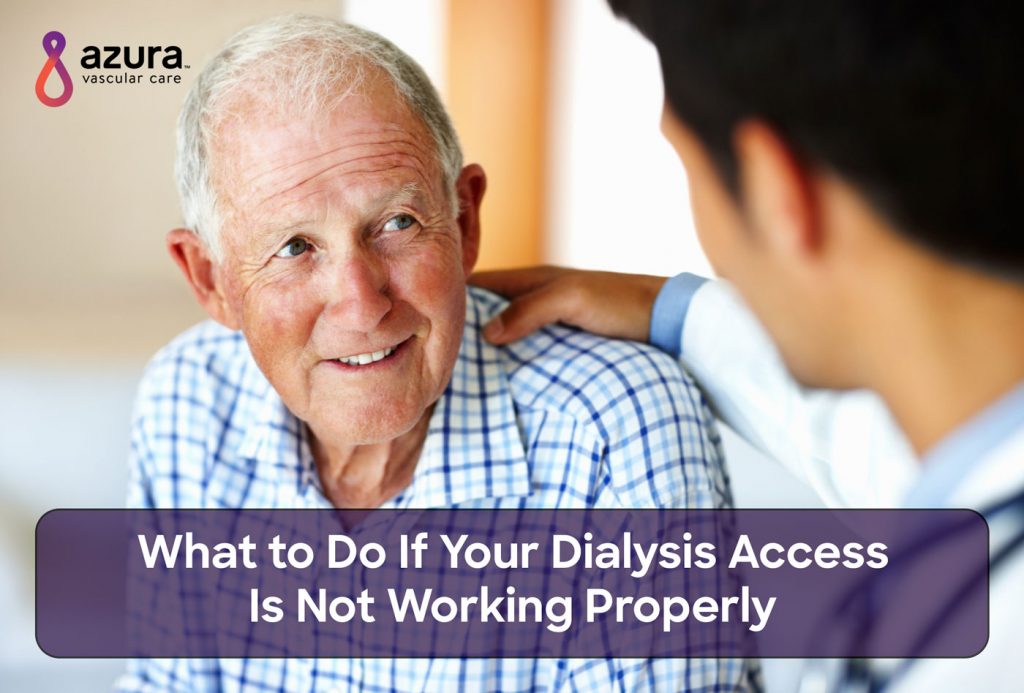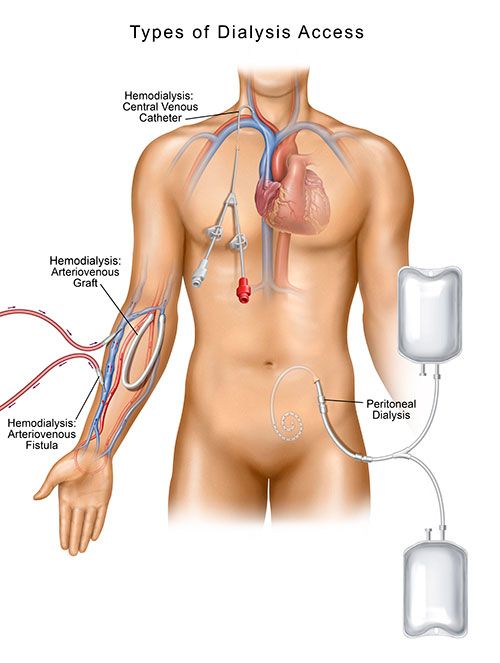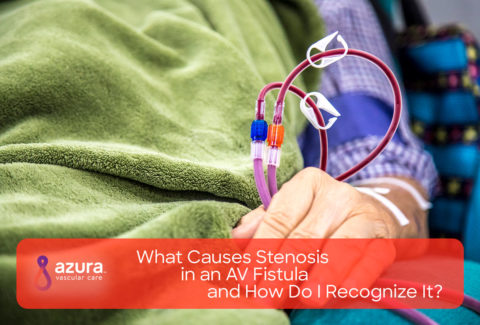
Making sure your dialysis access is functioning properly at all times is imperative to your health and well-being.
If your access site looks red, irritated or shows any other signs of infection, you’ll want to see your doctor as soon as possible. You can listen to your access site for a swishing sound, called a bruit. And, you’ll want to feel for vibration, called a “thrill.”
If you see no signs of infection, hear a steady swishing sound and feel a consistent thrill, you can relax, feeling confident that your access is working properly. You can also give yourself a high five for doing a great job of caring for your dialysis access.
However, recent changes in your access may indicate a problem, and you should know what to do if your dialysis access is not working properly.
Keep Emergency and Other Important Phone Numbers Handy
Before we look at the warning signs that your access might not be working correctly, we want to remind you to always keep the phone numbers for your doctor and dialysis team handy.
Be sure to post important phone numbers in a prominent place at home and remember to add contacts for these numbers in your cell phone in case you’re not at home and an emergency occurs.
Now let’s take a look at the signs that your access may not be functioning properly.
Warning Signs
The most common problems you may experience with your dialysis access are infection, clotting that leads to low blood flow and bleeding.i These complications can happen with AV fistulas, AV grafts and central venous catheters (CVCs). However, the type of dialysis access you have will often dictate what you should be aware of. For example, clotting is more common with AV grafts than with AV fistulas, and catheters are more prone to both clotting and infection than are fistulas or grafts.i ii

Signs that your access is infected may include:
- Redness, warmth or swelling near the access site
- Fever
- Soreness or tenderness at the site
- Drainage, or pus, at the access site
If you suspect your access is infected, call your doctor immediately. If an infection is present, chances are good you’ll need antibiotics to fight the bacteria causing it.iii
Signs that clotting has occurred or that your access has narrowed leading to poor blood flow may include:
- Change in thrill
- No thrill
- Change in bruit
- No bruit
- Swelling of the arm or leg where the access is
If you think your access has narrowed because the feel of the thrill and/or the sound of your bruit have changed, call your doctor or dialysis center. If you can’t feel any vibration or hear any sound at all, call your doctor immediately because your access could be clotted.
Signs that bleeding from your access is a problem may include:
- Bleeding from a fistula or graft that lasts more than 15 minutes immediately following dialysis treatment
- Visible bleeding from the catheter site iii
If you’re bleeding from your access site, you first need to try to stop the bleeding by putting gentle pressure on the area. Be sure to use a clean gauze pad when you do this to prevent infections. If the bleeding doesn’t stop, call your doctor or dialysis center, or go to an emergency room.iii
Know the Other Signs
Sometimes, your dialysis access will malfunction during your dialysis treatment.
Any of the following may indicate a problem:
- Difficulty placing needles
- Frequent alarms going off
- Clots being pulled during needle insertion
- Inadequate dialysis
- Low blood-flow rates
- A cold or painful hand
- Swelling in the arm and/or hand during dialysis
If you experience any of these warning signs during treatment, your access should be checked by your doctor or dialysis team.
Know the Signs That Require Emergency Attention
Some symptoms require immediate attention and should be treated as an emergency. If you experience any of the following symptoms, seek medical care immediately:
- No thrill
- No bruit
- Clotted access
- Infection
- Hyper-pulsatile aneurysm
If you have a central venous catheter (CVC), an infection can be life-threatening. Studies show that infection can lead to death in as many as one out of four patients who have a CVC and get an infection. Proper care and careful monitoring means your dialysis access will continue to function properly and you’ll continue receiving the life-saving dialysis you need.
Sources:
i National Institute of Diabetes and Digestive and Kidney Disease, National Institutes of Health. (2017). https://www.niddk.nih.gov/health-information/kidney-disease/kidney-failure/hemodialysis/vascular-access.
ii Kornbau, C., Lee, K. C, Hughes, G. D., and Firstenberg, M.S. (2015). Central line complications. International Journal of Critical Illness and Injury Science, 5(3), 170–178.
iii National Kidney Foundation. (2017). A to Z Health Guide, Hemodialysis Access. https://www.kidney.org/sites/default/files/11-50-0216_va.pdf


